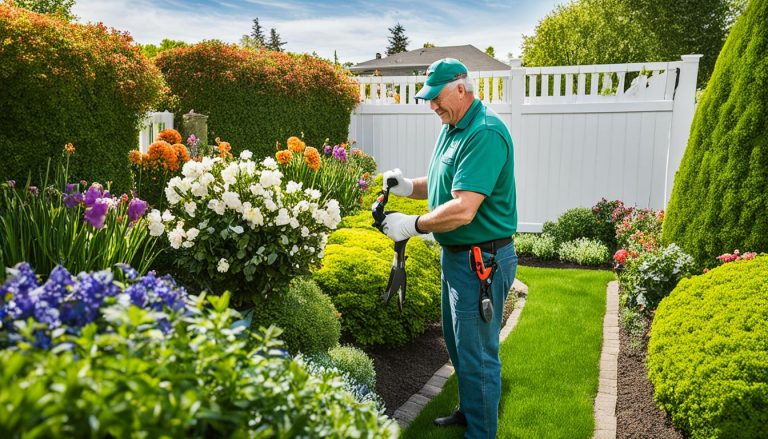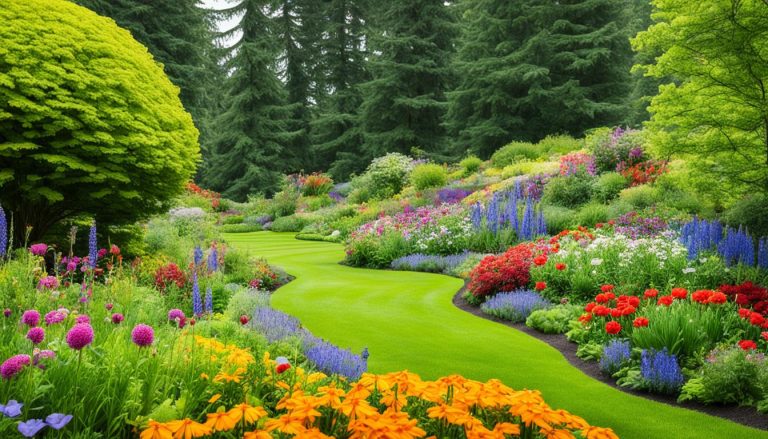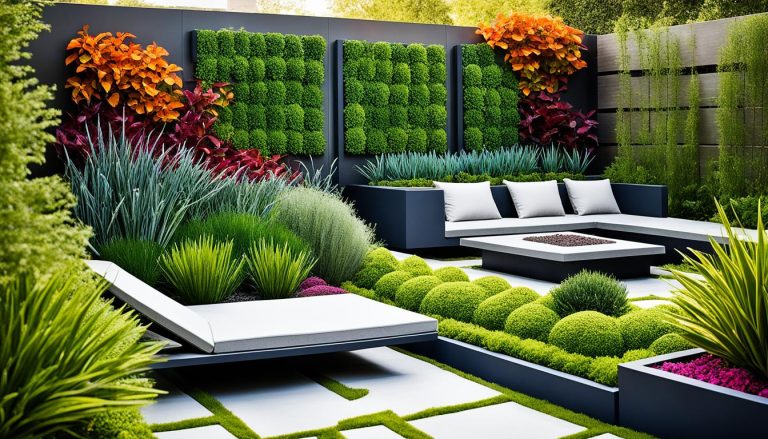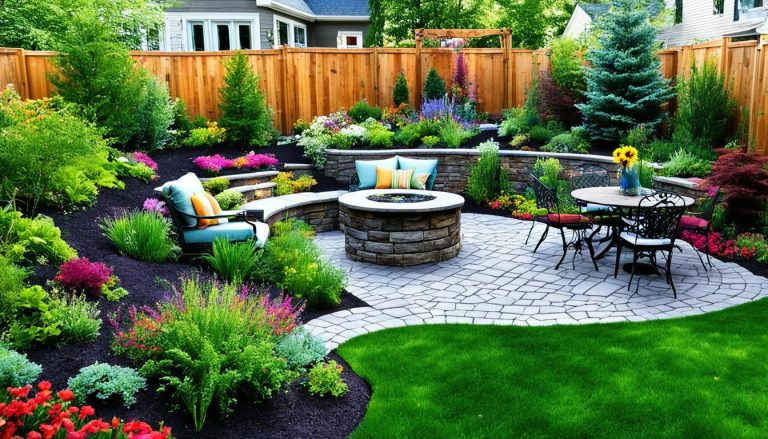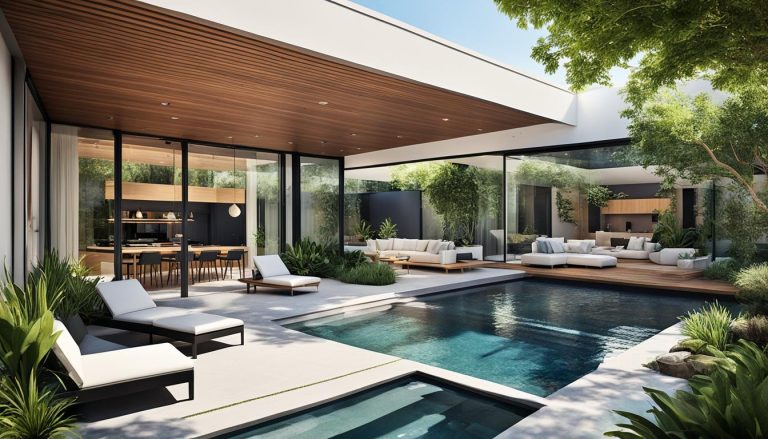Minimalist Landscape Design Trends
Welcome to our article on minimalist landscape design trends. In this section, we will explore the latest trends in minimalist landscape design. As more people seek simplicity and modern aesthetics in their outdoor spaces, minimalist design has become increasingly popular.
Minimalist landscape design focuses on clean lines, simplicity, and functionality. It embraces the concept of “less is more,” creating visually appealing and uncluttered outdoor environments. Whether you have a sprawling backyard or a small urban balcony, minimalist design principles can transform any space into a serene oasis.
Throughout this article, we will discuss key elements that define minimalist landscape design, techniques for creating serene outdoor spaces, and strategies for implementing minimalist design in small areas.
Get ready to be inspired! Let’s dive into the world of minimalist landscape design trends and discover how you can incorporate them into your own outdoor space.
Key Elements of Minimalist Landscape Design
Minimalist landscape design embraces simplicity and elegance, creating outdoor spaces that are visually stunning and serene. By focusing on key elements that embody this design philosophy, you can transform your garden or yard into a tranquil haven. Let’s explore the core aspects that define minimalist landscape design:
Clean Lines
Clean lines are the backbone of minimalist design. They create a sense of order and simplicity, allowing the natural beauty of the landscape to shine. Horizontal lines, such as paved pathways or low walls, can emphasize the spaciousness of an area, while vertical lines, like tall plants or sculptures, draw the eye upward. By incorporating clean lines, you can achieve a harmonious and balanced outdoor environment.
Focus on Functionality
Functionality is another essential element of minimalist landscape design. Each element should have a purpose and contribute to the overall functionality of the space. For example, seating areas should be comfortable and strategically placed, allowing for relaxation and enjoyment of the surroundings. Outdoor lighting should be carefully selected to create a warm and inviting ambiance, while also serving practical purposes such as safety and security.
Limited Color Palette
A limited color palette is a hallmark of minimalist design. Neutral tones, such as whites, grays, and earthy hues, dominate the color scheme, creating a sense of calmness and cohesion. Introducing pops of color sparingly, through carefully chosen plantings or decorative accents, can add visual interest without overwhelming the space. The goal is to create a harmonious and balanced color palette that enhances the natural beauty of the landscape.
| Minimalist Landscape Design Elements | Description |
|---|---|
| Clean Lines | Horizontal and vertical lines create a sense of order and simplicity, highlighting the beauty of the landscape. |
| Focus on Functionality | Every element of the design should serve a practical purpose, enhancing the functionality of the outdoor space. |
| Limited Color Palette | Neutral colors dominate the palette, while pops of color are used sparingly for visual interest. |
| Balance and Symmetry | Harmonious proportions and balanced arrangements create a sense of calm and symmetry. |
By incorporating these key elements into your minimalist landscape design, you can create a visually captivating and serene outdoor environment. Whether you have a large garden or a small urban balcony, minimalist design principles can transform any space into a peaceful sanctuary.
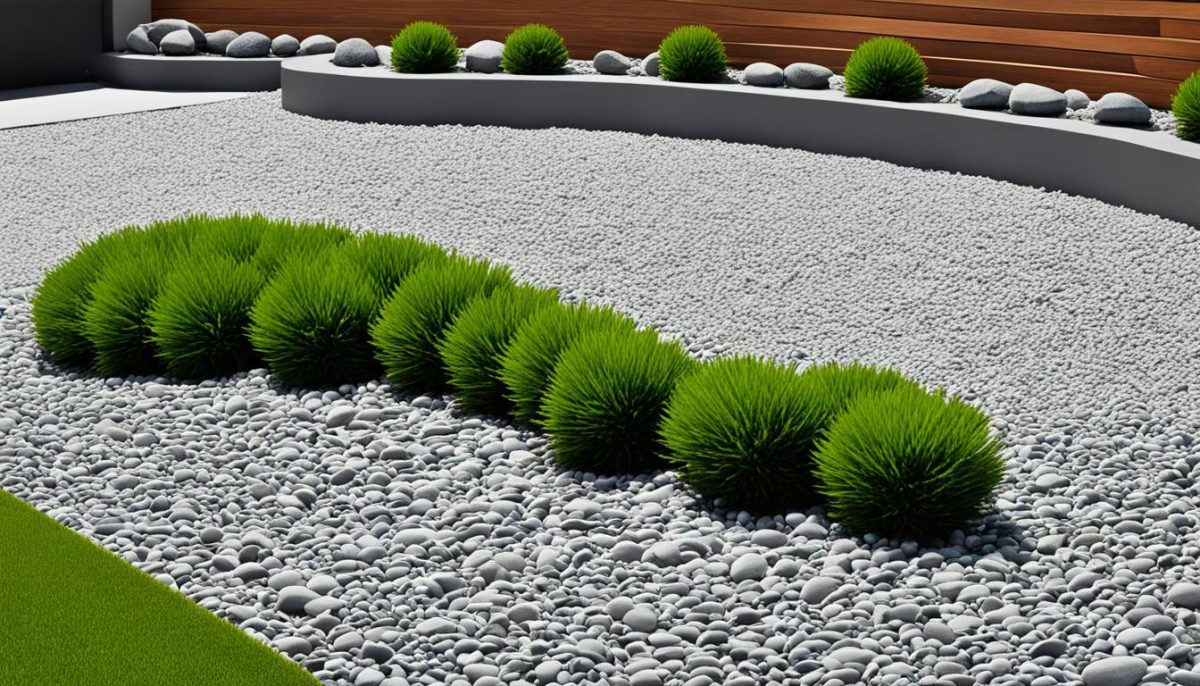
Creating Serene Outdoor Spaces
When it comes to minimalist landscape design, the focus is on creating serene outdoor spaces that exude tranquility and beauty. By incorporating innovative ideas and techniques, you can transform your surroundings into a peaceful sanctuary.
One key aspect of creating serene outdoor spaces is the use of native plants. These plants are adapted to the local climate and require minimal maintenance, allowing you to enjoy their natural beauty without the hassle of constant upkeep. Not only do native plants add visual interest to your outdoor space, but they also provide habitat for local wildlife, promoting a harmonious coexistence with nature.
In addition to native plants, utilizing natural materials can further enhance the tranquility of your outdoor space. Incorporating elements such as wood, stone, and water is a great way to create a sense of connection with the natural world. These materials add texture and visual appeal while evoking a serene atmosphere.
Another technique for creating serene outdoor spaces is through thoughtful lighting. Soft, warm lighting can set a calming ambiance, allowing you to enjoy your outdoor space even after the sun sets. Whether it’s subtle path lighting or elegant string lights, the right lighting can transform your outdoor space into a tranquil retreat.
Testimonial: Finding Peace and Serenity
“Since incorporating minimalist landscape design principles into my outdoor space, I have discovered a newfound sense of peace and serenity. The clean lines, native plants, and natural materials have transformed my backyard into an oasis of tranquility. I now look forward to spending time in my outdoor space, reconnecting with nature and finding solace in its simplicity.”
– Jane Smith, Minimalist Landscape Enthusiast
By following these techniques and incorporating minimalist landscape design principles, you can create serene outdoor spaces that provide a refuge from the chaos of daily life. Whether it’s a small backyard or a sprawling garden, simplicity and tranquility can be achieved through thoughtful design choices. Embrace the beauty of minimalism and reconnect with nature in a space that inspires peace and relaxation.
Minimalist Landscape Design for Small Spaces
If you have a small outdoor space, don’t worry! You can still create a stunning minimalist landscape design that maximizes every inch of your area. By employing creative strategies and thoughtful layout designs, you can transform your tiny outdoor space into an elegant oasis of simplicity.
One effective technique for small spaces is vertical gardening. By utilizing vertical surfaces such as walls or fences, you can create a lush and visually appealing garden without sacrificing valuable floor space. Hanging planters, trellises, and wall-mounted shelves can all be used to display a variety of plants, adding a touch of nature to your compact outdoor area.
In addition to vertical gardening, clever layout designs can make a big difference in small spaces. Consider using geometric lines and shapes to create a sense of order and balance. Long, narrow pathways can visually elongate your space, while strategically placed mirrors can create the illusion of a larger area. By carefully selecting and arranging your design elements, you can achieve a harmonious and inviting outdoor space.
Remember, the key to successful minimalist landscape design in small spaces is to prioritize functionality and simplicity. Choose only essential elements and keep the overall aesthetic clean and clutter-free. By utilizing vertical gardening and clever layout designs, you can create a beautiful outdoor space that will make the most of every square foot.


